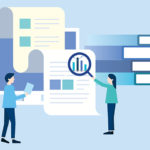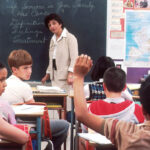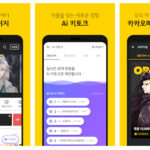Current Status of Each Field in the Korean Publishing Market
⑪ Educational Publications (textbooks/reference books/home-study materials)
2020.12.07

This volume will discuss the publishing industry’s status in Korea related to schools’ educational curriculums (curricula) from elementary to high school. In schools’ academic curriculums, textbooks are designated as the basic material, and reference books and home-study materials are used as much as textbooks as customized media to raise students’ level in learning. Educational publications for students in elementary, middle, and high schools in Korea, globally known for its high passion for education, have been the central foundation for general education in Korea. Furthermore, they take an overwhelming proportion in the publishing market, implying that they are also beginning to take the center of bookstore operations.
According to the Korean Educational Statistics Service (KEDI) of the Korean government (Ministry of Education), a total of 6.12 million students were taking public education in 2019. This number includes 0.63 million kindergarteners, 2.74 million elementary school students, 1.29 million middle school students, and 1.41 million high school students. The total number of students dropped by a whopping 23.5% from 8.01 million in 2009, almost a decade ago. Korea’s fall of birth rate is also relatively high from the global perspective, and a “low-birth, aging society” has long been on the table as a critical social agenda.
Educational publication in Korea is struggling in the changing market where the number of students is dropping, and the channels for learning are diversifying into digital platforms.
In fact, textbooks used as the basic material in elementary, middle, and high schools are government-authorized textbooks mostly produced by publishers and chosen by schools. And some subjects use government-designated textbooks. Some publishers focus on making reference books and exam books that support students’ learning at school, and some are mostly jumping into home-study materials and educational projects. Home-study materials are learning materials developed in countries such as Korea and Japan, which are delivered to homes in a regular subscription form. And for kindergarteners and elementary school kids, an instructor visits the subscriber’s house and gives classes. Well known publishers in this field include Daekyo, Kyowon Kumon, Woongjin Thinkbig, Hansol Education, JEI, and Kumsung.


Woongjin Smart All, Book Club ⓒWoongjin Thinkbig (wjthinkbig.com)
The number of subscribers for the home-visiting type has reduced due to the pandemic. It is inevitable as the service requires person-to-person contact. Also, learning centers that work as a studying room are going through a hard time as a social-distancing spread for quarantine. Publishers have turned their eyes to online classes to minimize the drop in demand. Meanwhile, businesses using smart devices are enjoying a healthy curve. For example, “Smart All,” a learning program based on A.I. made by Woongjin Thinkbig for all subjects learned in elementary schools, the membership grew exponentially with the spread of COVID-19. As an effort to respond to the pandemic, Woongjin Thinkbig launched businesses such as “Bookclub,” which is an educational business using home-study materials and a tablet PC, and saw a total of 166.1 billion won of sales and 8.9 billion won of operating income in the third quarter this year.
COVID-19 has made publishers launch businesses using online classes and smart devices.
According to the publications statistics announced by the Publication Industry Promotion Agency of Korea (KPIPA) in 2019, the market size of textbooks & reference books and home-study materials as of 2018 was 925.2 billion won and 1.41 trillion won, respectively. They account for quite a big slice of the pie, taking approximately 60% of the entire publishing market (3.91 trillion won), excluding magazines and webcomics. Also, 6,411 people are working in the textbook and reference book areas from the personnel perspective, while 7,753 are engaged in home-study businesses. The number of publishers in these fields may be small, but the number of people working in the industries is relatively high. Also, when looking at the proportions of major publication areas of Korean publishers, those publishing general books (60.4%) and academic/professional materials (20.4%) took a big proportion, but those making reference books (3.9%) and home-study materials (2.0%) took a very small proportion. As such, a few big publishers are leading the educational publishing market through the economy of scale. Representative publishers for textbooks and reference books include MiraeN, Chunjae Education, Visang Education Inc., Chunjae Textbook, Dong-A Publishing, Sinsago, Jihaksa, Kyohaksa, and Key Media. The number of titles published by educational publishers as of 2019 was 4,385 for elementary education and 4,827 for middle and high school education.



Logos of Chunjae Education, Neungyule Inc., and Daekyo Co.
The recent business performance of listed educational publishers is quite good (refer to the publishing trend in the second half of 2019 released by KPIPA). The sales of listed publishers in the fields of textbooks and reference books in the second half of 2019 was 165.8 billion won, which is up by 17.7% per year and a 50.4% increase from the previous quarter. If we look at Visang, its sales for the second half of 2019 were 114.3 billion won, a 28.7% increase year on year and 72.2% up from the previous quarter. And in terms of Neungyule Inc., its sales during the same period were 45.6 billion won, which is up 2.3% from the previous year and 17.2% from the previous quarter. Meanwhile, for listed publishers in the field of home-study materials, Woongjin Thinkbig recorded 323.8 billion won of sales in the second half of 2019, which is a 1.2% increase in the year and 3.0% from the previous quarter. The sales of Daekyo Co. during the same period were 346.5 billion won, which is a 2.5% increase on year and a 2.0% drop from the previous quarter.
For export volumes of publishers, Daekyo Co. recorded 11 billion won in the second half of 2019, which rose by 5% on the year, and 0.6% from the previous quarter. Publishers are accelerating their efforts to draw positive outcomes by building competitiveness and continuously attempting overseas expansion. So publishers are now stepping outside the domestic ground into the global stage. For example, Visang Education Inc. is currently selling services of multiple brands in the global market, including “Action Alphabet,” an English education program for toddlers to experience and learn English with MR (Motion Recognition) technology, “English Eye,” another English learning program where kids can learn English by watching and listening to storytelling videos just like how native English speakers learn their mother tongue, “ELiF,” an interactive English learning program where students get to “participate” in learning English through multimedia, “AllviA,” which is a futuristic smart class that uses smart boards and tablet PCs, “Quiz Monster,” which is a quiz program where kids can have fun learning English and mathematics while solving quizzes like playing a game, and “KLaSS,” which is a real-time interactive Korean learning program customized for each level. (Website of Visang Global: global.visang.com).

Global website of Visang Education Inc.
Publishers producing textbooks, reference books, and home-study materials in Korea could carry on relatively stable management based on the fact that such materials are a “necessity” in the educational industry. However, as the birth rate drops, the number of students is falling as well. Also, the publishers share a common issue of how to respond to the changing market environment of the educational industry where diversification is taking place based on digital platforms and devices. Publishers are therefore taking the move of developing content that can raise educational effects with high added-value for learners studying in the digital environment amidst the changing situation where digital textbooks have begun to be introduced to the curriculum.


